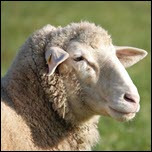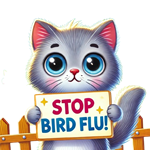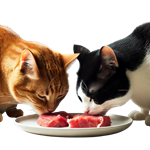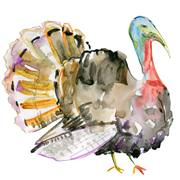
India: Highly pathogenic avian influenza
Source: WHO South-East Asia Region Epidemiological Bulletin 10 April, 2025 Between 1 January and 4 April 2025, India has witnessed continued outbreaks of Highly Pathogenic Avian Influenza (HPAI) across both domestic poultry and non-poultry species. According to a press release published by the India Ministry of Health and Family Welfare, a total of 34 epicentres have been identified in domestic poultry across eight states. Of these, six epicentres remain active, spanning three states: Jharkhand (Bokaro and Pakur), Telangana (Ranga Reddy, Nalgonda, and Yadadri Bhuvanagiri), and Chhattisgarh (Baikunthpur and Korea). Read MoreDead chickens found dumped in Polish forest
9 April, 2025 Authorities have initiated a formal investigation following the discovery of over 700 dead chickens infected with avian influenza, found discarded in a forested area of northern Poland. The disturbing find was reported by forestry workers who initially encountered nearly 500 carcasses near the village of Napierki, located within the Warmia-Masuria Province.Subsequent searches uncovered an additional 230 deceased birds, tightly packed into bags and abandoned nearby. Preliminary laboratory analyses detected the presence of avian flu, a diagnosis later validated by the State Research Institute based in Puławy, in eastern Poland. Read More
Rising rates of Campylobacter and Salmonella in England
8 April, 2025 The UK Health Security Agency (UKHSA) has published its first annual report summarizing trends in infectious diseases. The report provides an overview of infections of public health importance for the most recent years for which data is available, as well as the work being carried out by UKHSA and its partners to control their spread and mitigate their harmful impact. Read MoreMexico: bird flu in a 3-year-old girl
5 April, 2025 Health officials in Mexico report that a 3-year-old girl from the western state of Durango is in serious condition at a hospital in Torreón, located in the neighboring state of Coahuila. On April 1, the Institute of Epidemiological Diagnosis and Reference (InDRE) confirmed the result to Influenza A (H5N1). Read MoreEffect of inactivated vaccine on H9N2 transmission and evolution in chickens
npj Vaccines | ( 2025) 10:67 5 April, 2025 H9N2 avian influenza virus (AIV) is a low-pathogenicity virus endemic in poultry populations across Asia, the Middle East, and parts of Africa, with sporadic detection in the Americas and Europe. Despite its relatively mild clinical presentation in chickens, H9N2 AIV has significant economic consequences due to decreased productivity and increased susceptibility to secondary infections. Moreover, the virus possesses zoonotic potential, with documented transmission to mammals, including humans. Its internal gene segments have contributed to the emergence of several human-infecting avian influenza viruses (e.g., H5N6, H7N9).A recent study published in Nature investigates the effects of inactivated H9N2 vaccines on viral replication, transmission, genetic evolution, and cross-species adaptation potential, using both in vivo transmission models and deep sequencing approaches. It also evaluates alternative vaccination strategies capable of inducing broader immune responses. Read More
Sharp decline in bird flu cases reported in the US during March
2 April, 2025 March saw a significant decline in bird flu cases across the US, with only four laying flocks (commercial table egg pullets and commercial table egg layers) reporting diagnoses, compared to 21 and 22 farms affected in February and January 2025, respectively.The number of birds involved also dropped considerably, with approximately 2 million laying birds affected in March, down from 11 million in February and 19 million in January. Read More
First EU report on antimicrobial sales and use in animals
31 March, 2025 The European Union (EU27), along with Iceland and Norway, has collected and reported data on both the sales and use of antimicrobials in animals within their territories.The report, European Sales and Use of Antimicrobials for Veterinary Medicine: Annual Surveillance Report 2023, provides a comprehensive analysis of antimicrobial consumption in veterinary medicine across Europe. The data cover the year 2023, marking the beginning of an ongoing annual reporting initiative. Read More
Cats as sentinels of H5Nx exposure: A seroprevalence study, France (2023–2025)
Eurosurveillance - Volume 30, Issue 12, 27/Mar/2025 29 March, 2025 Highly pathogenic avian influenza viruses (HPAIV) H5Nx, notably clade 2.3.4.4b, have been increasingly circulating among avian populations and have been detected in mammals, including domestic cats. Given their role in bridging domestic environments and wildlife, cats serve as potential sentinels for assessing exposure to HPAIV. A recent study aimed to evaluate the seroprevalence of these viruses among outdoor cats in France over a 14-month period, investigating risk factors such as geographic location and hunting behavior. Read More
HPAI virus exposure in free-ranging bobcats in New York, USA
Journal of Wildlife Diseases, 2025 27 March, 2025 In a recent study published in the Journal of Wildlife Diseases, researchers conducted an investigation into free-ranging bobcats (Lynx rufus) in New York, USA. The study revealed widespread exposure to avian influenza, documenting instances of bobcats both surviving and succumbing to the highly pathogenic H5N1 strain. The research involved the analysis of serum samples from 16 free-ranging bobcats captured in New York State, indicating that 9 (56%) of these individuals tested positive for antibodies to the Influenza A Virus (IAV), with 4 of those also exhibiting positive antibodies for the H5 and N1 subtypes. The study observed significant variations in the individual responses of bobcats to the virus, including cases in which some bobcats remained healthy despite exposure, while one bobcat (bobcat #11) succumbed to highly pathogenic avian influenza (HPAI) infection. Read MoreAttribution of U.S. foodborne illnesses to commodities (1998–2008)
Emerging Infectious Diseases. Vol. 19, No. 3, March 2013 26 March, 2025 Foodborne illnesses represent a significant public health challenge in the United States, with over 9 million cases attributed to major pathogens each year. Effective prevention of these illnesses is complicated by the limited ability to link specific food items to individual cases and illnesses. To address this challenge, a method was developed to attribute foodborne illnesses to various food commodities based on data from outbreaks occurring between 1998 and 2008. A new study aims to estimate the annual instances of foodborne illnesses, hospitalizations, and deaths associated with 17 distinct food commodities, thereby providing valuable insights for prioritizing food safety initiatives. Researchers identified that a significant 46% of foodborne illnesses were attributed to produce, with poultry accounting for the highest number of deaths. Read More
H5N1 found in UK sheep
24 March, 2025 The H5N1 strain of avian influenza has been identified in a sheep in the UK.This marks the first instance globally of this variant being found in a sheep.
The Chief Veterinary Officer of the UK has confirmed a case of avian-origin influenza (H5N1) in a single sheep located in Yorkshire, following repeat positive tests on milk samples.
The case was detected during routine surveillance of livestock on a premises where avian influenza had previously been confirmed in captive birds. The Department for Environment, Food and Rural Affairs (Defra) has implemented livestock surveillance measures on infected premises in response to the outbreak of avian influenza in dairy cows in the US. Read More
CDC: D1.3 genotype in H5N1 case in Ohio
21 March, 2025 CDC has sequenced the virus from the most recent Ohio human case. Sequencing indicates this is a clade 2.3.4.4b virus of the D1.3 genotype. D1.3 viruses, like D1.1 viruses, originated from A3 genotype A(H5N1) viruses that were introduced to North America in 2022 and have subsequently reassorted with North American wild bird avian influenza viruses. Read MoreCampylobacter jejuni, human infections across the United States, 2013–2019
International Journal of Antimicrobial Agents 65 (2025) 107467 21 March, 2025 Antimicrobial resistance (AMR) poses a significant global public health threat, particularly in foodborne pathogens such as Campylobacter jejuni, the leading cause of bacterial gastroenteritis. Despite public health interventions aimed at controlling resistant strains, the prevalence of AMR among Campylobacter isolates continues to rise in the United States.Campylobacter infections are the most common foodborne illnesses in the U.S., affecting an estimated 1.5 million people annually. A new study analyzes publicly available AMR monitoring data from the National Antimicrobial Resistance Monitoring System (NARMS), focusing on trends and regional and demographic differences in resistance among domestically acquired C. jejuni infections from 2013 to 2019. Read More
Computational modeling of H5 Influenza variants vs. HA1 antibodies
eBioMedicine 2025;114: 105632 20 March, 2025 The H5N1 influenza virus poses a significant threat to public health due to its potential to shift from an epidemic to a pandemic. Since its emergence in the 1990s, H5N1 has demonstrated a concerning capacity for zoonotic transmission to humans. A new study published in eBioMedicine leverages high-performance computational modeling to investigate mutations in the virus's haemagglutinin (HA) protein and their implications for human immunity and healthcare preparedness.This research provides a comprehensive analysis of mutational dynamics in H5N1 influenza, emphasizing the binding interactions between HA1-neutralizing antibodies and diverse viral isolates collected over several decades. Read More
Major foodborne pathogens in the U.S., 2019
Emerg Infect Dis. 2025 Apr 20 March, 2025 Foodborne illnesses represent a significant public health concern in the United States, affecting millions of individuals annually. Accurate estimates of the incidence, hospitalization, and mortality associated with foodborne pathogens are essential for informing public health policies and optimizing resource allocation. A recent paper published in Emerging Infectious Diseases provides updated estimates of the number of domestically acquired foodborne illnesses, hospitalizations, and deaths caused by seven major pathogens as of 2019, employing advanced models that adjust for underreporting and underdiagnosis. Read MoreElevated replication, pathogenicity, and immune evasion of Texas dairy cattle H5N1 vs. avian strain
18 March, 2025 The emergence and persistence of highly pathogenic avian influenza (HPAI) A(H5N1) viruses in terrestrial mammals, particularly dairy cattle, demand urgent attention from the scientific community and health authorities. Since the initial outbreak in March 2024, the H5N1 strain has rapidly spread across multiple U.S. states, leading to human infections primarily linked to exposure to infected cattle. A study published in Scientific Reports examines the growth properties, pathogenicity, and immune evasion mechanisms of a Texas cattle-derived H5N1 virus, comparing it to a historical avian isolate to assess the risks associated with this emerging virus. Read MoreU.S.: first outbreak of H7N9 bird flu on farm since 2017
17 March, 2025 The United States has reported its first outbreak of H7N9 avian influenza on a poultry farm since 2017, as stated by the World Organisation for Animal Health (WOAH).The highly pathogenic avian influenza (HPAI) H7N9, which originates from the North American wild bird lineage, was detected in a commercial broiler breeder flock in Mississippi. Read More
Immune history shapes antibody responses to H5N1
Nature Medicine | 2025 16 March, 2025 A new paper published in Nature Medicine investigates how previous exposure to influenza viruses influences immune responses to H5N1, with a particular emphasis on immune imprinting. Historically, H5N1 viruses have been associated with a higher mortality rate in younger individuals compared to older individuals, possibly due to differences in immunological exposure.The authors analyzed H5N1 antibody responses in serum samples from 157 individuals born between 1927 and 2016. They examined the relationship between antibody levels, birth year, and age, with a specific focus on immunological imprinting.
Antibody titers against H5N1 strains were higher in older individuals, suggesting that childhood exposure to earlier group 1 influenza viruses (H1N1 and H2N2) may enhance later immune responses to H5N1. Read More
Belgium: Eggs recalled due to possible Salmonella contamination
13 March, 2025 Approximately 70 cases of Salmonella infection have been reported in Belgium following an outbreak linked to table eggs. At the beginning of 2025, a rise in Salmonella cases was reported, prompting an epidemiological investigation. Tests confirmed that eggs were the source of the Salmonellosis outbreak.From the start of the year until February 17, 67 cases of Salmonella were diagnosed, with eggs identified as the common source of infection. The strain involved was Salmonella Enteritidis. No deaths have been reported. Read More
Belgium: First case of bird flu in cats in Belgium
11 March, 2025 On 18 February, highly pathogenic avian influenza was detected in a poultry farm in Sint-Gillis-Waas (East Flanders). Two outdoor cats of the poultry keeper were also infected with the virus, probably by eating contaminated eggs or drinking contaminated water. Both cats showed severe symptoms of the disease and were euthanized for this reason. Read MoreNetherlands: Transitioning from culling to vaccination against HPAI?
10 March, 2025 A pilot program utilizing a vaccine against avian influenza is currently underway at a poultry farm. Following a positive test last year, this initiative is being conducted at a commercial poultry farm that exclusively produces eggs for the Dutch market. This step is essential due to the existing trade barriers related to vaccination.Last year, a field trial demonstrated the effectiveness of two avian influenza vaccines in practical applications. The key distinction of this pilot program is its implementation at a commercial facility, with the produced eggs intended for consumption. Read More
Mammal-to-mammal transmission of HPAIV among marine mammals
Nature Communications vol. 16: 2232 (2025) 6 March, 2025 A new study published in Nature Communications discusses a significant outbreak of H5N1 highly pathogenic avian influenza virus (HPAIV) clade 2.3.4.4b that emerged in Chile in December 2022. The outbreak caused substantial mortality among wild birds, poultry, and marine mammals and included one confirmed human case. A comprehensive surveillance effort was conducted, involving the collection of over 18,500 samples from 9,745 cases, with 7.33% testing positive for HPAIV H5N1.The HPAIV H5N1 virus exhibited rapid north-to-south dissemination along the Pacific coastline and was genetically linked to earlier outbreaks in Peru. Notably, key mutations, such as PB2 D701N, were identified in both marine mammals and the human case in Chile, suggesting potential adaptations for mammalian transmission. Read More
Pathogenicity and transmission of bovine-derived HPAI H5N1 B3.13 in pigs
bioRxiv | March 5, 2025 5 March, 2025 A new study published in bioRxiv examines the pathogenicity and transmissibility of the bovine-derived HPAI H5N1 B3.13 virus in pigs. The HPAI H5N1 virus has been detected in dairy cattle, with significant outbreaks across multiple U.S. states, leading to human infections primarily through direct contact with infected cattle. The study aimed to assess the ability of the B3.13 virus to infect pigs, which are known "mixing vessels" for influenza viruses. The virus was administered to pigs via oro-respiratory routes.The B3.13 virus replicated in the lower respiratory tracts of infected pigs, producing infectious virus but demonstrating limited viral shedding compared to other known strains, such as those adapted for mink or swine. Pathologic changes were primarily observed in the lungs, but the disease remained self-limiting. A mutation in hemagglutinin (HA) associated with mammalian adaptation was detected but did not reach significant levels. Read More
HPAI outbreak data in the U.S. over the past three months
4 March, 2025 The primary poultry involved are commercial table egg layers, primarily due to the size of their flocks.However, when considering outbreak hotspots, most are found in turkey flocks. Read More
Biosensor for rapid detection of avian (H5N1) influenza
ACS Sensors | 2025 3 March, 2025 A recent study published in ACS Sensors outlines the capabilities of a novel biosensor designed for the rapid detection of airborne avian influenza (H5N1) and Escherichia coli within a timeframe of under five minutes. This biosensor incorporates a specialized material that combines Prussian blue and graphene oxide on carbon electrodes, facilitating highly sensitive detection. The device is capable of identifying H5N1 at remarkably low concentrations, specifically as few as 56 viral RNA copies per milliliter, and detecting E. coli from as little as 5 bacterial cells per milliliter, achieving an accuracy rate exceeding 90%. Read MoreVaccines against HPAI offer longer term protection of layer hens in field study
28 February, 2025 A field trial conducted at Wageningen University & Research (the Netherlands) evaluated the effectiveness of bird flu vaccines.The two experimental bird flu vaccines under investigation in this field study provide long-term protection to layer hens but do not completely prevent mortality following infection. At the start of the trial in September 2023, 1,800 laying hens were vaccinated and housed on two commercial poultry farms. The study at these farms will continue until the third quarter of 2025.
During the trial, a subset of vaccinated chickens will be transferred to WBVR for a transmission study on four separate occasions. The first of these studies was conducted eight weeks post-vaccination, demonstrating that the hens were fully protected against bird flu at that age. The second study took place at 24 weeks of age, a period during which egg production reaches its peak. Read More
Clade 2.3.4.4b H5N1 neuraminidase has a long stalk
mBio 2025 27 February, 2025 A newly published study in mBio investigates the characteristics of neuraminidase (NA) in clade 2.3.4.4b of the H5N1 avian influenza virus, highlighting the predominant presence of long-stalk variants. The study emphasizes that clade 2.3.4.4b H5N1 viruses, which have rapidly expanded globally since 2020, primarily express a long NA stalk, in contrast to the shorter stalks prevalent in earlier highly pathogenic strains.Neuraminidase long-stalk variants are associated with an enhanced potential for transmission among mammals. This structural feature facilitates viral interaction within the respiratory tract and mucosal surfaces, thereby promoting efficient spread. In contrast, truncated NA stalks have been linked to increased virulence in poultry but may compromise transmission efficiency in mammals, leading to reduced viral shedding and dissemination. Read More
NCC Statement on Trump Administration’s Response to Avian Influenza
27 February, 2025 The National Chicken Council released the following statement after USDA announced federal actions to combat Highly Pathogenic Avian Influenza (HPAI).Attributable to NCC President Harrison Kircher: “We applaud Secretary Rollins and the Trump administration for their desire and commitment to combat HPAI across all species – a common goal shared by U.S. broiler producers. Particularly, we appreciate the measured and science-based approach for the potential use of an effective and applicable vaccine for laying hens and turkeys. Read More

Two Washington cats infected with bird flu
27 February, 2025 The Washington State Department of Agriculture (WSDA) announced the detection of H5N1 in domestic cats from two households in King and Snohomish counties, both linked to a specific brand of raw commercial cat food associated with severe illness in cats in Oregon. One cat was euthanized due to the severity of the illness, while the other is currently receiving veterinary treatment.On Monday morning, February 24, the Washington Animal Disease Diagnostic Laboratory (WADDL) reported presumptive positive results for both cats with highly pathogenic avian influenza (HPAI). WSDA received confirmatory results from the National Veterinary Services Laboratory (NVSL) on Tuesday, February 25. Read More
USDA: $1 Billion to combat bird flu
26 February, 2025 The Trump administration is allocating up to $1 billion in new funding to mitigate the effects of highly pathogenic avian influenza (HPAI) and the resulting surge in egg prices.In an article published in The Wall Street Journal, USDA Secretary Brooke Rollins stated, “There is no silver bullet for eradicating avian flu.” She outlined a multi-faceted strategy to address the crisis, which includes:
-Allocating up to $500 million to assist U.S. poultry producers in implementing advanced biosecurity measures.
-Providing up to $400 million in financial relief to farmers whose flocks have been affected by avian influenza.
-Exploring the use of vaccines and therapeutics for laying hens. Although vaccines alone are not a comprehensive solution, the USDA will invest up to $100 million in research and development to enhance their efficacy and efficiency. At present, the USDA has not authorized the use of vaccines against HPAI. Read More
Elanco partners with Medgene to market bird flu vaccine for dairy cattle
25 February, 2025 Elanco Animal Health announced the establishment of an agreement with Medgene, a South Dakota-based biotechnology company, to utilize its advanced vaccine platform technology (baculovirusderived recombinant subunit vaccine). Under this agreement, Elanco will oversee the commercialization of a highly pathogenic avian influenza (HPAI) vaccine for use in dairy cattle. Medgene has reported that the vaccine has successfully met all requirements outlined by the U.S. Department of Agriculture (USDA) for platform technology and is currently in the final stages of review for conditional licensure. Read More
Avian influenza strikes Sandhill Cranes in Indiana
25 February, 2025 Avian influenza has impacted Fish Lake, causing the deaths of hundreds of birds, including a significant number of sandhill cranes. Over the past few weeks, thousands of sandhill cranes have been migrating through the area.According to the Indiana Department of Natural Resources, nearly 1,500 sandhill cranes have succumbed to avian influenza across Green, Union, Jasper, La Porte, and Starke counties.
Sandhill cranes migrate from their wintering grounds as far south as Florida to Michigan in February and early March. Read More
Australia: fourth case of HPAI
25 February, 2025 Avian influenza has been detected at a fourth poultry farm in Euroa, in northeastern Victoria.The farm contains about 90,000 chickens. This marks the fourth detection of the H7N8 strain in the area since February 8. Read More

Avian influenza outbreaks in Australia continue
20 February, 2025 H7 avian influenza is confirmed at a third poultry property in northern Victoria. All infected properties are within the control area and under quarantine.Given the close proximity to existing infected properties, this new detection is not unexpected.
Diagnostic tests confirmed a high pathogenicity strain of H7N8. Read More
HPAI H5N1 infection in indoor cats from dairy worker homes
MMWR | February 20, 2025 | Vol. 74 | No. 5 20 February, 2025 The article titled "Highly Pathogenic Avian Influenza A(H5N1) Virus Infection of Indoor Domestic Cats Within Dairy Industry Worker Households — Michigan, May 2024" was published in the Morbidity and Mortality Weekly Report (MMWR) by the U.S. Centers for Disease Control and Prevention (CDC) on February 20, 2025. This report elucidates a public health investigation into instances of highly pathogenic avian influenza (HPAI) A(H5N1) virus infection identified in two exclusively indoor domestic cats residing in households of dairy workers in Michigan. Read MoreSenators urge USDA to act fast on bird flu
20 February, 2025 A bipartisan group of senators, led by Sen. Chuck Grassley (R-Iowa), sent a letter urging Agriculture Secretary Brooke Rollins to strengthen the USDA’s response to the ongoing highly pathogenic avian influenza (HPAI) outbreak, the largest animal health crisis in U.S. history. The outbreak has led to the depopulation of over 136 million birds and affected farm workers. The senators advocate for measures including vaccination strategies, an HPAI Strategic Initiative for prevention and response, and movement controls for animals at risk. Read More
Canada buys avian flu vaccine for high-risk individuals
19 February, 2025 The Public Health Agency of Canada (PHAC) has secured an initial supply of 500,000 doses of GSK’s human vaccine against avian influenza - Arepanrix™ H5N1 A/American wigeon clade 2.3.4.4b. This vaccine will be utilized as part of Canada’s contingency planning to safeguard individuals who may be at an increased risk of exposure to the virus through contact with infected animals. PHAC will distribute the vaccines to provinces and territories based on an equitable and risk-based approach, allocating 60% of the available doses to provincial and territorial governments and reserving 40% for a federal stockpile to ensure national preparedness. Read MoreH5N1 genotype D1.1 in a dairy cattle in Maricopa County
15 February, 2025 The Arizona Department of Agriculture (AZDA), in collaboration with the United States Department of Agriculture (USDA), has confirmed the first detection of H5N1 avian influenza in milk produced by a dairy herd in Maricopa County, Arizona.The dairy herd that tested positive for the D1.1 H5N1 genotype is currently under quarantine; however, the cattle are exhibiting no symptoms at this time. Read More
Wyoming reports first human case of bird flu
15 February, 2025 The Wyoming Department of Health has confirmed its first human case of H5N1 bird flu in the region, marking the third documented instance of hospitalization related to this infection in the United States. The patient, a woman with preexisting health conditions that increase susceptibility to illness, is currently hospitalized in Colorado. Read MoreU.S. conditionally approves Zoetis' avian flu vaccine
15 February, 2025 Zoetis announced that the U.S. Department of Agriculture (USDA) Center for Veterinary Biologics (CVB) has granted the company a conditional license for its Avian Influenza Vaccine, H5N2 Subtype, Killed Virus. This vaccine is approved for use in chickens. The conditional license was issued based on demonstrated safety, purity, and a reasonable expectation of efficacy supported by serology data. Read More
Two cats euthanized after testing positive for bird flu
15 February, 2025 Two house cats in Multnomah County, Oregon, living in separate households, were euthanized after testing positive for bird flu linked to their consumption of pet food made from raw chicken. The Oregon Department of Agriculture confirmed that both cats were eating the same type of pet food, called "Wild Coast Raw," produced by "Wild Coast Pet Foods." Read MoreLawmakers move to block USDA's 'Salmonella Rule'
14 February, 2025 Representatives Tracey Mann and Steve Womack have introduced legislation to block the U.S. Department of Agriculture’s (USDA) proposed Salmonella rule. The USDA developed this framework in July to reduce Salmonella in raw poultry products. The rule would require final products to contain no more than 10 colony-forming units of Salmonella per gram, and any detectable serotype of public health concern would be barred from commerce.The National Chicken Council (NCC) supports the bill, arguing that the USDA’s proposal offers no public health benefits, is legally flawed, and would impose excessive costs. Read More
CDC finds H5 bird flu antibodies in 3 vets working with cattle
14 February, 2025 The US Centers for Disease Control and Prevention (CDC) reports on recent avian influenza A (H5N1) infections in three veterinarians who work with cattle. A serosurvey was conducted among 150 U.S. bovine veterinary practitioners to investigate the prevalence of recent HPAI A(H5) infection.Three (2%) practitioners had antibodies to HPAI A(H5), suggesting recent infection, despite none reporting respiratory symptoms or conjunctivitis. The findings suggest potential HPAI A(H5) virus-infected dairy cattle in states without identified infections, highlighting the need for rapid identification through testing. Read More
Lawmakers urge USDA against avian flu vaccination
14 February, 2025 In a letter to the U.S. Secretary of Agriculture Mrs. Brooke Rollins Senators and Congress Members supports the no introduction of vaccines as a means of handling bird flu outbreaks. In the letter they specify that the major affected branch is the egg-type layers. "Since the start of the current outbreak in 2022, of the more than 150 million birds affected, more than 77 percent have been commercial egg-laying hens, 12 percent commercial turkeys, and eight percent commercial broilers, according to USDA." Moreover, they wrote "most US trading partners do not recognize countries that vaccinate as "free of HPAI" due to concerns that vaccines can mask the presence of the virus. Read MoreThe WHO and bird flu
13 February, 2025 According to press reports, World Health Organization spokesman Christian Lindmeier stated that communication regarding bird flu has become challenging since U.S. President Donald Trump announced his withdrawal from the UN health agency. Read MoreOhio reports first human case of bird flu
13 February, 2025 The Ohio Department of Health is reporting the state’s first probable human case of Highly Pathogenic Avian Influenza (HPAI). An adult male Mercer County farm worker who was in contact with deceased commercial poultry was infected with the virus. Read MoreStudy evaluates HPAI vaccine efficacy in cattle
Scientific Reports | (2025) 15:4637 11 February, 2025 A recent study published in Scientific Reports evaluated the immune response to an H5 avian influenza vaccine in calves and lactating cows. The research investigated the efficacy of an inactivated H5 avian influenza vaccine, focusing on the humoral immune response and the transfer of antibodies through milk. The highly pathogenic avian influenza (HPAI) H5N1 virus strain A/ibis/Egypt/RLQP-229 S/2022, belonging to clade 2.3.4.4b, was utilized as the antigen for assessing the vaccine's efficacy in the Hemagglutination Inhibition (HI) test. The vaccine was formulated as an oil-adjuvanted, inactivated preparation containing two different strains: the H5N6 strain Re13 (A/duck/Fujian/S1424/2020) from clade 2.3.4.4h and the H5N8 strain Re14 (A/whooper swan/Shanxi/4-1/2020) from clade 2.3.4.4b. Read MoreWhat is known about the H5N1 virus identified in Nevada cattle?
9 February, 2025 A report published by the Animal and Plant Health Inspection Service (APHIS) of the U.S. Department of Agriculture (USDA) details the characterization of viral sequences obtained from the milk of Nevada cows infected with the D1.1 genotype (HA clade 2.3.4.4b).The D1.1 viruses identified in dairy cattle in Nevada were found to be closely related to other D1.1 viruses recently detected in migratory wild birds across multiple North American flyways. Analysis of the hemagglutinin gene of the Nevada dairy cattle viruses did not reveal changes predicted to affect infectivity or adaptation to mammalian hosts. However, a mutation, PB2 D701N, commonly associated with the mammalian adaptation of highly pathogenic avian influenza (HPAI) viruses, was identified in viruses sequenced from four separate dairy cattle. Read More
Nevada dairy worker tests positive for H5N1
9 February, 2025 A dairy farm worker in Nevada has tested positive for H5N1, marking the first human infection identified in the state. The worker is exhibiting symptoms that include red, inflamed eyes, or conjunctivitis. The U.S. Centers for Disease Control and Prevention (CDC) is currently working to confirm the initial positive test result. There is concern regarding whether this case is associated with the documented H5N1 2.3.4.4b D1.1 strain and represents a human spillover from cattle. Read More
Australia: HPAI (H7N8) in Victoria
8 February, 2025 Agriculture Victoria has confirmed the presence of avian influenza at a poultry property in northern Victoria. Diagnostic testing performed by Australian Centre for Disease Preparedness at Geelong confirmed high pathogenicity H7N8, which is different to the strain that impacted Victorian poultry farms during 2024. Although the 2024 New South Wales/Australian Capital Territory outbreak was also an H7N8 virus, the current laboratory has advised that the current Victorian outbreak is a different virus.The property has been placed under quarantine and a declared area is in place in the eastern two-thirds of the Strathbogie Shire to prevent movements that could spread the virus. Read More
Significant updates on avian influenza in the United States
7 February, 2025 Seven cases of avian influenza have been confirmed in poultry at live markets located in the Bronx, Brooklyn, and Queens, leading to the temporary closure of all live poultry markets in New York City, as well as in Westchester, Nassau, and Suffolk counties. These closures will remain in effect until January 14. To mitigate the spread of the virus, infected flocks will be culled. Markets unaffected by the virus are required to sell off existing inventory and undergo comprehensive disinfection procedures before resuming operations. During the closure, no poultry deliveries will be permitted. The outbreak has had significant economic repercussions. Read More
Cats may spread H5N1 to humans and vice versa
7 February, 2025 The Washington Post reported that cats infected with bird flu may have spread the virus to humans in the same household and vice versa, based on data that appeared briefly online in a report from the CDC before disappearing. The data appear to have been mistakenly posted but includes crucial information about the risks of bird flu to people and pets.In one household, an infected cat may have transmitted the virus to another cat and a human teenager, according to data obtained by The New York Times. The cat succumbed to the illness four days after symptoms appeared. In a second household, the initial case involved an infected dairy farmworker, followed by a cat that became sick two days later and died on the third day. Read More
APHIS confirms D1.1 genotype in dairy cattle in Nevada
5 February, 2025 On January 31, 2025, the USDA Animal and Plant Health Inspection Service (APHIS) National Veterinary Services Laboratories (NVSL) confirmed by whole genome sequence the first detection of highly pathogenic avian influenza (HPAI) H5N1 clade 2.3.4.4b, genotype D1.1 in dairy cattle. This confirmation was a result of State tracing and investigation, following an initial detection on silo testing under the USDA’s National Milk Testing Strategy (NMTS) in Nevada.This genotype has been associated with severe infections in humans. The D1.1 variant of the virus was linked to the first reported death in the U.S. related to avian influenza, as well as to a severe illness in Canada. A resident of Louisiana passed away in January after developing severe respiratory symptoms following contact with wild and backyard birds. In British Columbia, a teenage girl was hospitalized for several months due to a virus traced to poultry. Read More
Erysipelas: An emerging threat to laying hens
Av Dis | 2025 3 February, 2025 A new review article published in Avian Diseases examines Erysipelas, a bacterial disease caused by Erysipelothrix rhusiopathiae, which has re-emerged as a significant concern in laying hens. Although Erysipelothrix rhusiopathiae has been known to affect poultry for over a century, it was historically considered more relevant to turkeys, with relatively few cases reported in chickens. However, recent years have seen an increase in reported cases, particularly in layers.The transition from conventional battery cages to litter-based systems, often with outdoor access, has been associated with a rise in outbreaks in Europe. This shift in housing practices correlates with the increasing incidence of Erysipelas. Read More
Antibody prophylaxis shields Macaques from severe H5N1
Kanekiyo et al., Science 387, 534–541 (2025) 31 January, 2025 Influenza virus pandemics and seasonal epidemics present significant threats to global health, resulting in numerous fatalities each year. The recurrent zoonotic spillovers of influenza viruses, which possess the potential for human pandemic transmission, underscore the urgent necessity for effective preventive measures. A study published in Science examines the application of the broadly neutralizing antibody (bnAb) MEDI8852 as a pre-exposure prophylaxis in cynomolgus macaques, with the objective of evaluating its efficacy in preventing severe disease caused by aerosolized highly pathogenic avian influenza H5N1 virus infection. The findings of this investigation demonstrate that pre-exposure prophylaxis with MEDI8852 provides substantial protection to cynomolgus macaques against severe respiratory disease following infection with the H5N1 virus. Read MoreUK farmers urge action on HPAI vaccination strategy
31 January, 2025 According to a BBC publication, poultry farmers in the UK are appealing to the government to let them vaccinate their flocks against the "devastating" avian influenza virus spreading across the country.Vaccinating poultry against avian influenza is currently not allowed in the UK. The government says that strong biosecurity measures and culling are the most effective ways of fighting it. Overall levels of the virus have not yet reached the peak of recent years, but without a vaccine, it only a matter of time before the number of outbreaks will increase again. An avian influenza prevention zone enforcing strict hygiene standards around domesticated birds has been declared for England, Wales and Scotland amid a rising number of cases of highly pathogenic avian influenza (HPAI). Read More

Japan: Avian Influenza and Rising Egg Prices
31 January, 2025 Recent outbreaks of highly pathogenic avian influenza in Japan have severely impacted commercial layer flocks, leading to a sharp increase in egg prices. So far this season, 50 bird flu outbreaks have been confirmed at chicken farms across 14 prefectures, resulting in the culling of 9.27 million birds. The spread of this infectious disease has driven a significant spike in egg prices. Read MoremRNA vaccine protects chickens from divergent H5N1 viruses
Journal of Nanobiotechnology (2025) 23:55 30 January, 2025 The persistent threat of avian influenza virus (AIV), particularly the H5 subtype, poses substantial risks not only to avian species but also to human health. Traditional vaccination strategies, such as whole-virus inactivated vaccines, encounter numerous challenges, including reliance on chicken embryos for production and limited efficacy against rapidly mutating virus strains. In response to these challenges, a study published in the Journal of Nanobiotechnology by Chinese researchers investigates the development of a novel mRNA vaccine encapsulated in lipid nanoparticles (LNPs), with the aim of providing broad-spectrum immunity against the H5N1 virus. The research evaluates the vaccine's immunogenicity and protective efficacy in both murine and avian models, seeking to establish a new paradigm for avian influenza vaccination strategies. Read MoreRose Acre Farms reports a bird flu outbreak at its Seymour facility
29 January, 2025 An outbreak of avian influenza in a poultry flock in the United States may not initially seem like a significant news event. However, the situation becomes far more concerning when the affected farm houses 2.8 million layers from the nation’s second-largest producer. The culling of such a substantial number of birds will further worsen the ongoing table egg shortage and contribute to the sharp price increases that have been observed in the U.S. egg market in recent months. Read MoreThe AHAW & ECDC opinion on avian influenza vaccination of animals
29 January, 2025 The Scientific Opinion of the EFSA Panel on Animal Health and Animal Welfare (AHAW) and the European Centre for Disease Prevention and Control (ECDC) regarding the Vaccination of Animals Against Avian Influenza.Vaccination against Highly Pathogenic Avian Influenza (HPAI) represents a valuable tool for preventing and controlling the spread of HPAI when integrated into a comprehensive strategy for disease prevention and management. Various vaccines targeting Highly Pathogenic Avian Influenza Viruses (HPAIVs) are currently available. Additionally, experimental efforts are underway in the United States to develop an avian influenza vaccine intended for use in cattle. Read More
USA: Zoetis and BI receives import permit for TRT vaccine
28 January, 2025 Zoetis Inc. announced that the U.S. Department of Agriculture’s Center for Veterinary Biologics (CVB) has granted an import permit for a modified live vaccine, PoulvacTRT, to address an increasing demand within the poultry industry for the control of turkey rhinotracheitis (TRT), an upper respiratory tract disease caused by avian metapneumovirus (aMPV).The vaccine strain is a subtype A, K strain of turkey origin. Read MoreUSA: First outbreak of H5N9 avian influenza in poultry
27 January, 2025 The United States has confirmed its first outbreak of H5N9 avian influenza in poultry, specifically on a duck farm located in California. U.S. authorities also identified the more prevalent H5N1 strain at the same farm in Merced County, California. According to the report submitted to WOAH, nearly 119,000 birds on the farm were culled by December 2. This incident marks the first verified occurrence of Highly Pathogenic Avian Influenza (HPAI) H5N9 in poultry within the United States. Read MoreHuman case of avian influenza detected in England
27 January, 2025 The UK Health Security Agency (UKHSA) has confirmed a case of influenza A(H5N1) in an individual located in the West Midlands region. The infection was acquired on a farm where the individual had close and prolonged contact with a substantial number of infected birds. Currently, the individual is in stable condition and has been admitted to a High Consequence Infectious Disease (HCID) unit. The avian population was found to be infected with the DI.2 genotype, which is one of the variants known to be circulating among birds in the UK during the current season. Read MoreReceptor binding and tissue tropism of cattle-infecting H5N1 influenza
Cell 188, 1–11 | February 20, 2025 23 January, 2025 A recent study published in Cell elucidates the receptor-binding properties of the H5N1 avian influenza virus that infects cattle, revealing its potential risks to both animal and public health, particularly in light of recent cattle outbreaks.The article investigates the complex mechanisms through which the H5N1 avian influenza virus (AIV) interacts with host tissues, specifically in cattle. The study centers on the hemagglutinin (HA) protein, analyzing its receptor-binding characteristics, structural properties, and implications for cross-species transmission. Given the zoonotic potential of H5N1, a comprehensive understanding of these mechanisms is crucial for evaluating the associated risks to both animal and human populations.
The research confirms that H5N1 hemagglutinin exhibits a strong binding affinity for sialic acid receptors present in cattle, indicating a significant risk for cross-species transmission. While the virus predominantly binds to avian-like α2-3 sialic acid Read More
Avian influenza H5N1: A growing Threat to global biodiversity
nature reviews biodiversity | Volume 1 | January 2025 | 7–9 23 January, 2025 A review by Sergio A. Lambertucci, Andrea Santangeli, and Pablo I. Plazaon the threat of highly pathogenic avian influenza (HPAI) H5 to global biodiversity was published in Nature Reviews Biodiversity. The article addresses the emerging threat posed by the highly pathogenic avian influenza (H5N1) virus, which carries significant implications for global biodiversity. Since its initial detection in poultry and waterfowl, H5N1 has disseminated globally, resulting in severe outbreaks that have substantially diminished wildlife populations.The authors delineate the critical situation regarding H5N1, describing its rapid proliferation across continents and its devastating effects on various wildlife species. They underscore the urgent necessity for enhanced surveillance, early diagnosis, and international collaboration to mitigate the impacts of this virus on wildlife and ecosystems. Read More
Massive culling of laying hens due to avian influenza
23 January, 2025 Two commercial egg-laying flocks, each comprising over one million birds, are being culled due to an outbreak of avian influenza. One flock tested positive on January 21 in Newton, Missouri, while the second was confirmed today in Mercer County, Ohio. The first flock contains 1.175 million birds, and the second has 1.432 million birds. Given this situation, it is not surprising that egg prices are soaring.Furthermore, we must ask ourselves what measures the Veterinary Services in the United States are implementing in an effort to mitigate the spread of the virus that has significantly impacted the poultry and dairy industries since the beginning of 2022 and 2024, respectively? Read More
Bird flu in raw pet food kills or sickens cats, FDA says
22 January, 2025 Avian influenza (H5N1) has transitioned from avian hosts to domestic felines, with the U.S. Food and Drug Administration (FDA) confirming that 13 domestic cats across eight households, one exotic cat from a separate household, and an unspecified number of animals at two large feline sanctuaries in the United States have either fallen ill or succumbed to the virus. These cases have been documented in California, Colorado, Oregon, and Washington State. Read MoreLong Island duck farm hit with avian influenza
22 January, 2025 A Long Island farm is set to euthanize more than 100,000 ducks following a bird flu outbreak at the eastern New York facility. The affected farm is Crescent Duck Farm, located in Aquebogue, New York, and is a family-owned operation. Crescent Duck Farm is the largest commercial duck farm in Suffolk County and one of the last remaining commercial duck farms on Long Island, an area historically known for its extensive duck farming industry. Read MoreImpact of poultry vaccination on H5 avian influenza transmission and evolution
Li et al., Sci. Adv. 11 | 22 January 2025 22 January, 2025 A study published in Scientific Advances examines the impact of mass vaccination of poultry against H5 subtypes of avian influenza virus (AIV) on the spread of the virus, with an acknowledgment that such vaccination might also accelerate viral evolution. This research explores the dynamics of AIV lineages among both vaccinated and unvaccinated poultry, as well as wild birds, from 1996 to 2023.The findings indicate that vaccination in poultry influences transmission dynamics, with unvaccinated poultry exhibiting greater susceptibility to infections from wild birds. This observation suggests that vaccination may serve as a barrier to viral spread.
The analysis reveals a shift from a lineage that circulated among Chinese poultry to one that is now prevalent among wild birds. The lineage from wild birds has been frequently transmitted to unvaccinated European poultry, whereas the spillover from wild birds to vaccinated poultry appears to be hindered. Read More

APHIS tightens turkey surveillance
by Prof. Simon Shane 20 January, 2025 As part of its ongoing, multi-faceted efforts to combat the spread of highly pathogenic avian influenza (HPAI), USDA’s Animal and Plant Health Inspection Service (APHIS) is updating its policy for pre-slaughter surveillance to enhance testing of turkey flocks in affected states. In late December 2024, APHIS became aware of a genetic link between turkeys potentially infected with HPAI H5N1, virus detected in raw pet food, and an infected household cat.Out of an abundance of caution, and to remove a potential avenue for ongoing disease spread as well as to bolster consumer and trading partner confidence, APHIS collaborated with state animal health officials and the poultry industry to update its guidance for existing pre-slaughter surveillance steps to further ensure that affected poultry does not enter the food system. Read More
Bird flu continues to affect multiple countries
20 January, 2025 United States: The avian influenza virus has been identified for the first time in a commercial poultry flock in Georgia amidst a nationwide outbreak. This marks the first incidence of the virus affecting a poultry producer in Georgia since the nationwide outbreak in 2022, despite prior detections of the virus in the state occurring exclusively within backyard flocks.Japan: A total of approximately 1.44 million birds are slated for culling across seven farms due to the continued emergence of avian influenza cases in Japan. Read More
Burying poultry carcasses on-farm: Insights from an avian influenza crisis in France
Poultry Science 104 (2025) 19 January, 2025 A study examining the disposal of poultry carcasses during avian influenza outbreaks in France was published in Poultry Science. This research underscores the significance of effective disposal methods, particularly on-farm burial, to ensure both disease control (avian influenza) and environmental protection. The investigation was conducted during a substantial epizootic in France, where rapid and effective disposal methods were critical for controlling the spread of avian influenza. The research encompassed five study sites where poultry carcasses were buried during the avian influenza crisis. The study evaluated various factors, including the persistence of avian influenza virus (AIV) RNA in the burial sites, the microbiological safety of the surrounding environment, and the physical changes in the burial pits over time. Read MoremRNA Vaccine Against H5N1 Protects Ferrets
by Prof. Simon Shane 19 January, 2025 A recent paper reported on development of an mRNA vaccine that protected ferrets against clade 2.3.4.4b H5N1. Challenge viruses were derived from a 2022 avian outbreak and a 2024 human case respectively. Unvaccinated controlled ferrets all died following challenge. Vaccination reduced propagation of virus in both the upper and lower respiratory tracts of infected ferrets. This is important in limiting contagion with respect to a potentially zoonotic strain impacting human populations. The potential of an effective mRNA against H5N1 to reduce the intensity of a pandemic strain of H5N1 is self-evident. Read MoreItaly: A cat in Bologna tests positive for avian influenza
18 January, 2025 In Valsamoggia (Bologna), a case of avian influenza was identified in a domestic cat. The feline resided in close proximity to poultry on a small family farm where the avian infection had previously been detected, resulting in the mandated culling of all poultry on the premises. Read MorePet food makers must address H5N1 in safety plans
18 January, 2025 As the FDA continues to track cases of H5N1 in domestic and wild cats in California, Colorado, Oregon, and Washington State linked to the consumption of contaminated food products, the U.S. Food and Drug Administration has determined that manufacturers of cat and dog foods covered by the FDA Food Safety Modernization Act Preventive Controls for Animal Food (PCAF) rule must reanalyze their food safety plans. This reanalysis is necessary when using uncooked or unpasteurized materials derived from poultry or cattle (e.g., raw meat, unpasteurized milk, or unpasteurized eggs) to address Highly Pathogenic Avian Influenza virus (specifically H5N1) as a known or reasonably foreseeable hazard. Read MoreHHS grants $590M for mRNA flu vaccine development
18 January, 2025 The U.S. Department of Health and Human Services (HHS) will provide approximately $590 million to Moderna to accelerate the development of mRNA-based pandemic influenza vaccines and enhance mRNA platform capabilities so that the U.S. is better prepared to respond to other emerging infectious diseases.This funding allows Moderna to accelerate development of an H5N1 mRNA influenza vaccine that is well matched to strains currently circulating in cows and birds and expands the clinical data supporting the use of mRNA vaccines that may be needed if other influenza strains emerge with pandemic potential. Read More
Campylobacteriosis rates in the UK: Expert analysis
17 January, 2025 Campylobacter is recognized as the primary bacterial agent responsible for foodborne illnesses in the United Kingdom. The majority of cases are predominantly linked to poultry, particularly chicken. In response to this public health concern, the Food Standards Agency (FSA) initiated a Campylobacter reduction program in 2010 aimed at decreasing the levels of Campylobacter contamination in poultry. Through collaborative efforts with the industry, the FSA successfully reduced the proportion of chickens with high levels of Campylobacter contamination (exceeding 1,000 cfu/g) available for retail from 19% in 2014 to 5% in 2017. Recent data suggest that these improvements have been sustained. However, it is noteworthy that the incidence of human cases has remained stable at approximately 100 per 100,000 population. Read MoreHPAI confirmed in commercial poultry flock in Georgia
17 January, 2025 The Georgia Department of Agriculture and the United States Department of Agriculture’s Animal and Plant Health Inspection Service confirmed a positive case of Highly Pathogenic Avian Influenza (HPAI) in a commercial poultry operation located in Elbert County, Georgia. This is the first confirmed HPAI case in a commercial poultry operation in Georgia, and the fifth detection in the state of Georgia. Read MorePathogenesis of bovine-derived H5N1 infection in Cynomolgus Macaques
Nature | 2025 16 January, 2025 A recent study published in Nature examined the infection dynamics and pathological outcomes associated with the highly pathogenic avian influenza (HPAI) H5N1 virus, specifically the clade 2.3.4.4b strain, in Macaca fascicularis (cynomolgus macaques). The investigation revealed that the route of viral inoculation significantly influenced disease severity. Intranasal and intratracheal inoculation resulted in systemic viral dissemination and varying degrees of respiratory pathology, whereas orogastric inoculation predominantly caused localized infection with minimal clinical manifestations. Read More
Bird flu confirmed in LA County cat deaths linked to raw pet food, milk
15 January, 2025 Five indoor-only cats in one household experienced acute onset of illness after consuming two brands of commercially available raw pet food. Four of the cats had severe clinical signs and two of them died. One cat had mild clinical signs. One of the severely affected cats was tested and later confirmed to be infected with H5N1. Both raw pet food diets were tested, and one of the two raw pet foods, Monarch Raw Pet Food, was confirmed to contain live, infective, H5N1 virus.In a second single-cat household, the indoor-only cat had acute onset of illness after consuming three different brands of commercially available raw pet food. This cat was tested and confirmed to be infected with H5 bird flu. Read More

Norway obtains option for 11 Million H5N1 vaccine doses
12 January, 2025 The Norwegian Institute of Public Health is enhancing its preparedness for avian influenza by securing an option for 11 million vaccines doses in the event of a pandemic. The agreement with two suppliers involves the production of vaccines that will be prioritized if a new influenza virus emerges and triggers a pandemic, ensuring two doses for every individual in Norway. The initial doses are expected to be delivered four to six months after the World Health Organization declares a new pandemic.The pharmaceutical companies GSK and Seqirus will supply vaccines to Norway. Read More
H5N5 in a cat in Iceland
9 January, 2025 In December, we reported an outbreak of H5N5 avian influenza in Iceland. The virus has been classified as H5N5 and has been sporadically reported for approximately two years in Canada and Europe. A study published in the esteemed journal Cell details several introductions of the virus from Europe to North America through transatlantic migration and subsequent spillover to mammals . Read MoreU.S. revives avian influenza vaccine plan
9 January, 2025 The United States is renewing its bird flu vaccine strategy as the virus continues to severely impact poultry and dairy industries, causing the deaths of over 130 million birds and leading to human infections. The USDA remains cautious about widespread vaccine use due to potential trade complications. Read MoreAvian influenza surveillance in vaccinated flocks
Emerg Infect Dis. 2025;31(1):115-122. 8 January, 2025 Detecting silent virus circulation is a major challenge in vaccinated flocks, as vaccination markedly reduces mortality and clinical symptoms, which are traditionally used to identify the presence of the virus. Consequently, monitoring vaccinated flocks to control the spread of the virus is a complex issue. A study published in the international journal Emerging Infectious Diseases (EID) by scientists from Toulouse, affiliated with UMR IHAP (INRAE/ENVT), demonstrates that enhanced event-based surveillance, utilizing weekly samples from deceased ducks, is the most effective strategy for the rapid detection of the highly pathogenic avian influenza (HPAI) virus in duck farms vaccinated against HPAI. Read MoreAdaptation of H5N1 virus to dairy cattle and other mammals
bioRxiv preprint | January 6, 2025 8 January, 2025 ANP32 proteins (Acidic Nuclear Phosphoprotein 32) are a family of evolutionarily conserved proteins involved in various cellular processes, including gene regulation, apoptosis, and chromatin remodeling. ANP32 proteins have also been implicated in supporting influenza virus replication. The human acidic nuclear phosphoproteins ANP32A and ANP32B are functionally redundant but essential host factors for the replication of mammalian-adapted influenza A virus (IAV) and influenza B virus (IBV) in human cells. When both proteins are absent, influenza polymerases fail to replicate the viral genome, preventing the propagation of infectious virus particles. Read MoreFirst U.S. H5N1-related human death
7 January, 2025 The Louisiana Department of Health reports the patient who had been hospitalized with the first human case of highly pathogenic avian influenza (HPAI), or H5N1, in Louisiana and the U.S. has died. The patient was over the age of 65 and was reported to have underlying medical conditions. The patient contracted H5N1 after exposure to a combination of a non-commercial backyard flock and wild birds. Read MoreHPAI A(H5N1) virus infections in humans
the New England Journal of Medicine | December 31, 2024 2 January, 2025 A new publication in the New England Journal of Medicine examines the emergence and impact of highly pathogenic avian influenza A(H5N1) virus infections in humans and livestock in the United States, particularly from March to October 2024. During this period, 46 human cases were reported, primarily linked to occupational exposure to infected poultry and dairy cows. Most cases were mild, with symptoms such as conjunctivitis and respiratory issues, and none required hospitalization or resulted in death. The study highlights the importance of monitoring and preventive measures to address the risk of animal-to-human transmission.The A(H5N1) infections in humans were predominantly mild, with no severe illnesses or fatalities reported among the 46 cases. Most patients experienced conjunctivitis and other mild symptoms. All but one case was associated with occupational exposure to infected animals, highlighting the risks faced by agricultural workers. Importantly, no evidence of human-to- Read More
The severe case of H5N1 in Canada: more details
the New England Journal of Medicine | December 31, 2024 2 January, 2025 A new publication in The New England Journal of Medicine (NEJM) reports a case of critical illness caused by influenza A(H5N1) virus infection in a 13-year-old girl from British Columbia. She initially presented with conjunctivitis and fever and was discharged without treatment but later returned with respiratory distress and other severe symptoms.Upon readmission, she was found to have a high viral load of influenza A, which necessitated her transfer to the pediatric intensive care unit. Despite treatment with oseltamivir and other antiviral medications, her condition worsened, requiring tracheal intubation and extracorporeal membrane oxygenation (ECMO). Read More
Evolution of H5 and H7 HPAI virus cleavage site
1 January, 2025 A recent review examines the molecular evolution of highly pathogenic viruses, focusing on their natural history, biology, and the critical role of the haemagglutinin cleavage site motif.The review offers a comprehensive analysis of the haemagglutinin cleavage site (HACS) motif in H5 and H7 avian influenza viruses (AIVs) and its implications for pathogenicity. It discusses the structural characteristics of the HACS motif, its function in the cleavage of the haemagglutinin protein, and the evolutionary dynamics that influence the emergence of highly pathogenic strains. The composition of the HACS motif, particularly the number of basic amino acids, is a primary determinant of the pathogenicity of H5 and H7 AIVs. Highly pathogenic avian influenza viruses (HPAIVs) typically possess multiple basic residues, allowing for cleavage by a broader range of host proteases, which facilitates systemic infection. Read More
Strategic challenges in the global control of HPAI
1 January, 2025 A recent scholarly review entitled "Strategic challenges in the global control of high pathogenicity avian influenza" presents a comprehensive analysis of HPAI management strategies. This authoritative publication, authored by leading experts in the field, examines the worldwide proliferation of the H5Nx lineage since 2005 and its consequent implications. The review addresses several critical aspects of HPAI control, including the documented ecological and epidemiological mutations of these viruses, their substantial impact on both wild and domesticated avian populations, and the associated risks of human transmission. Regarding prophylactic measures, the research presents substantial evidence supporting vaccination as an effective preventive intervention. Read MoreAPHIS updates indemnity program for avian influenza
1 January, 2025 The U.S. Department of Agriculture’s Animal and Plant Health Inspection Service (APHIS) is introducing an interim final rule aimed at curbing the spread of Highly Pathogenic Avian Influenza (HPAI) and providing farmers with additional tools to manage the disease. Under the new rule, poultry facilities must complete a biosecurity audit before restocking their flocks following an HPAI detection and before becoming eligible for future indemnity payments.While APHIS, in collaboration with state and federal veterinary officials and industry partners, has worked extensively to address biosecurity challenges, some poultry farms continue to face difficulties, with some experiencing multiple outbreaks. Read More










